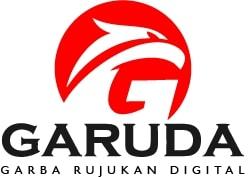PENCEGAHAN ANEMIA TERPADU PADA REMAJA DI LIUKANG KALMAS, KABUPATEN PANGKAJENE DAN KEPULAUAN
DOI:
https://doi.org/10.59060/3hdc6h75Keywords:
Adolescents, Anemia prevention, Hemoglobin screening, Iron suplementation, Nutrition educationAbstract
Adolescents are highly vulnerable to anemia, especially in island regions with limited access to health services and nutritious foods. This community service aimed to implement an integrated anemia prevention program through hemoglobin examination and health education for adolescents in Liukang Kalmas, Pangkajene and Kepulauan Regency. Activities included screening hemoglobin levels and delivering counseling sessions on anemia prevention and the importance of iron–folic acid (IFA) tablet consumption. A total of 32 adolescents participated, and data on hemoglobin status were collected and documented. The mean hemoglobin level was 12.8 g/dL, with values ranging from 11.0 to 14.6 g/dL. Based on WHO cut-off values, 21.9% of participants were classified as anemic. Counseling sessions improved participants’ understanding of anemia prevention strategies, including balanced diets and regular IFA supplementation. The activities also raised awareness regarding the importance of early detection of hemoglobin levels as part of adolescent health monitoring. In conclusion, integrated anemia prevention combining hemoglobin screening and health education effectively increased knowledge and awareness while identifying adolescents at risk of anemia in island communities.
References
Ardina, M., Hidayat, A. R., & Fadhilah, S. (2025). Dietary patterns are related to the incidence of anemia in adolescent. Indonesian Journal of Global Health Research, 7(5), 753–758. https://doi.org/10.37287/ijghr.v7i5.6955
Arini, N., Bakta, M., & Citrawati, D. M. (2017). The impact of iron supplementation toward hemoglobin levels on teenage girls in Bangli Regency, Bali, Indonesia. International Journal of Research in Medical Sciences, 5(8), 3454–3457. https://doi.org/10.18203/2320-6012.ijrms20173539
Kementerian Kesehatan Republik Indonesia. (2018). Riset kesehatan dasar (Riskesdas) 2018 – Katalog data ketersediaan data. Kementerian Kesehatan RI. https://layanandata.kemkes.go.id/katalog-data/riskesdas/ketersediaan-data/riskesdas-2018
Sulistyana Djati, I., Nugraheni, S. A., & Sriatmi, A. (2025). Factors influencing attitude making in the prevention of anemia in female adolescent: A scoping review. Jurnal Indonesia Sosial Teknologi, 6(1), 590–610. https://doi.org/10.59141/jist.v6i1.8901
Petry, N., Olofin, I., Hurrell, R. F., Boy, E., Wirth, J. P., Moursi, M., & Rohner, F. (2016). The proportion of anemia associated with iron deficiency in low, medium, and high Human Development Index countries: A systematic analysis of national surveys. Nutrients, 8(11), 693. https://www.mdpi.com/2072-6643/8/11/693
Priliani, L., Andriani, D., Putra, F., Rahmawati, I., & Santoso, A. (2025). Mapping anemia prevalence across Indonesia. Asia Pacific Journal of Clinical Nutrition, 34(3), 430–439. https://doi.org/10.6133/apjcn.202506_34(3).0017
Silitonga, H. T. H., Salim, L. A., & Nurmala, I. (2024). A systematic review of iron supplementation’s effects on adolescent girls. Jurnal Gizi Indonesia, 12(2), 60–69. https://doi.org/10.14710/jgi.12.2.60-69
Yanisah, B. F., & Widati, S. (2023). Is health education on anemia increasing iron supplementation consumption in adolescent girls?: A systematic review. Jurnal Promkes: The Indonesian Journal of Health Promotion and Health Education, 11(1SI), 46–51. https://doi.org/10.20473/jpk.V11.I1SI.2023.46-51
Downloads
Published
Versions
- 2025-10-30 (3)
- 2025-10-30 (2)
- 2025-10-30 (1)
Issue
Section
License
Copyright (c) 2025 Nur Hikmawaty Syarifuddin, Holif Fitriyah, Widya Lestari Nurpratama

This work is licensed under a Creative Commons Attribution 4.0 International License.












